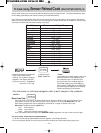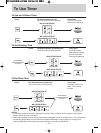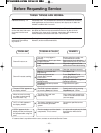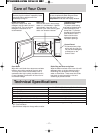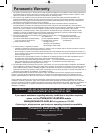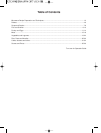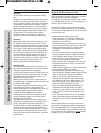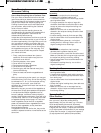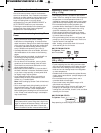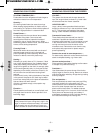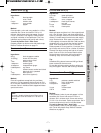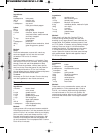
Microwave Recipe Preparation and Techniques
Microwaves penetrate the surface of the food to a
depth of about two to three centimetres and then
the heat is gradually conducted in a random pattern.
Some parts of food matter cook faster than others.
Special microwave techniques are used to promote
Food Characteristics
Size and Quantity
Small portions cook faster than large portions. As
you increase the quantity of food you put into the
microwave oven, you must also increase your
cooking time. The microwave oven has the same
power regardless of quantity; thus the power is
divided between more items and so it takes longer
to cook.
As a general guide, if you double the quantity of
food suggested in the recipe, add half the time
suggested again.
Liquid Content
Low moisture foods take a shorter time to cook than
foods with a lot of moisture.
Shape
Uniform sizes cook more evenly. To compensate for
irregular shapes, place thin pieces towards the
centre of the dish and thicker pieces towards the
outer edge of the dish.
Bone and Fat
Bones conduct heat and cause the meat next to
them to be heated more quickly. Large amounts of
fat absorb microwave energy and the meat next to
these areas may overcook.
Starting Temperature
Food which has been sitting at room temperature
takes less time to cook than refrigerated or frozen
food.
Density and Composition
Porous, airy foods (cakes and breads) take less
time to cook than heavy compacted foods (meat
and vegetables). Recipes high in fat and sugar
content cook more quickly.
Key to Symbols Used In Recipes
Recipes displaying these symbols may be cooked
using these features.
(S) Sensor Cook / for NN-ST677M/NN-ST667W
ÅÅ
Auto cook / only for NN-ST657W/NN-ST657S
fast and even cooking. Some of these techniques
are similar to those used in conventional cooking,
but because microwaves produce heat very quickly
the following techniques are extremely important.
It’s a must for you to be familiar with the following
tips.
Techniques for Preparation
Timing
A range of cooking times is given in each recipe for
two reasons. First, to allow for the uncontrollable
differences in food shapes, starting temperatures
and personal preferences. Secondly, these allow for
the differences in electrical voltage input which
changes during peak load periods. Always
remember that it is easier to add time to
undercooked food. Once the food is overcooked,
nothing can be done. For each recipe, an
approximate cooking time is given.
Stirring
Stirring is often necessary during microwave
cooking. We have noted when stirring is helpful in
the recipes. Always bring the outside edges towards
the centre and the centre portions to the outside.
Rearranging or Turning
Some foods should be turned in the container
during cooking. For example, because of the
different thicknesses in the breast and back
sections of poultry, it is a good idea to turn poultry
over once to ensure more even cooking.
Rearranging or turning over uneven shaped food in
the dish should be done as suggested to ensure a
satisfactory result. Rearrange small items such as
chicken pieces, prawns, hamburger patties, nuts or
potatoes. Rearrange pieces from the centre to the
edge of the dish.
Cooking in Layers
This microwave oven is not designed to cook more
than 1 layer of food. Cooking in 2 layers may not
always be successful, it takes longer and may be
uneven. You can successfully reheat two dinner
plates of food at one time but remember to increase
the reheating time and use a microwave warming
rack.
Piercing of Foods
Pierce the skin or membrane of foods such as eggs,
tomatoes and jacket potatoes when cooked whole
in the microwave oven. This allows steam to
escape. If the skin has not been pierced, food may
burst.
Cured Meats
Cured meats may overcook in some areas due to
the high concentration of salts used in the curing
process. So take care when cooking different
brands of bacon as cooking times may vary slightly.
– 1 –



